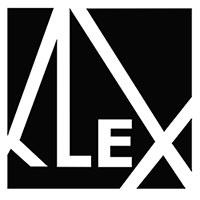Vidéographe Programme
Curated by Fabrizio Gilardino
When being informed that this year’s theme was “Pulse”, American composer Steve Reich immediately popped up in my mind. A couple of days later, I found out that the United Nations has declared 2016 the UN International Year of Pulses (the so-called “grain legumes”: kidney beans, peas, lentils).
In medicine, one’s pulse represents the tactile arterial palpation of the heartbeat, whereas in physics, a pulse is a single disturbance that moves through a medium from one point to the next. Finally, in signal processing the term “pulse” could mean a rapid change in the characteristic of a signal (phase or frequency), from a baseline value to a higher or lower value, followed by a rapid return to the baseline value.
Reich’s name came to mind not only because the cycle of eleven chords at the beginning and at the end of his most beautiful composition—1974’s “Music for 18 Musicians”— is indeed called “Pulse” or because many of his biographies paint him as “the creator of ‘phase’ and ‘pulse’ music”, but also because music has always played a major role in my life.
I’ve been involved in music (particularly “creative music”) for most of my life—briefly as a musician, but mainly as a record producer, concert organizer, curator and graphic artist—so it should come as no surprise that many of the video artists featured in this programme have developed over the years very strong relationships with composers and sound designers, or nurtured a special interest in “sound”, so as to create true collaborative audio-visual gems.
From the extremely slow “pulse” of John Cage’s piece “Organ2/ASLSP”, which will last over a period of 639 years—and which is at the core of Pierre Hébert’s “John Cage—Halberstadt”, to the manic beat of Gerard Leckey’s music (“OK Gerard” by Nathalie Bujold); from Étienne de Massy’s exploration of the relationship between visual and abstract narrative set to an impressive score by acclaimed electro-acoustic composer Nicolas Bernier, to Eduardo Menz’s short movie’s astonishing “natural” soundtrack (where only incidental music is played for a few seconds), and Dorion Berg’s humorous look at the “digitality” of the information object, you’ll find in this programme rhythmic successions of both images and sounds, lots of heartbeats, and plenty of more or less rapid visual changes. Alas, no beans or lentils (but, hey, we’re still in 2015…). (Fabrizio Gilardino)
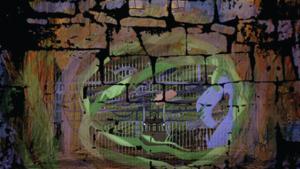
John Cage—Halberstadt (2013)
10:50 min
Pierre Hébert
Through a combination of live shooting, digital processing, and animation, “John Cage— Halberstadt” expresses the temporal vertigo generated by the rendering of John Cage’s piece “Organ2/ASLSP” over a period of 639 years. The images were shot at the 12th change of note, on July 5, 2012, in the Burchardt Church in Halberstadt, Germany.
One of the leading light of Canadian animation and experimental film-making, Pierre Hébert has worked for the world-famous National Film Board of Canada before going independent more than 20 years ago. His pioneering animation techniques developed for movies such as “Chants et danses du monde inanimé”, “The Technology of Tears”, “La Plante humaine” and “Between Science and Garbage” have won him dozens of prestigious awards, including a Bessy Award, the Norman McLaren Heritage Award and, more recently, the Quebec Government Award for Cinema for life time achievement. Over a career spanning more than 40 years, Hébert has always developed strong working relationships with musicians and composers, including Montreal’s own Robert M. Lepage, René Lussier and Jean Derome, as well as Ornette Coleman, Fred Frith, Bob Ostertag and Andrea Martignoni.
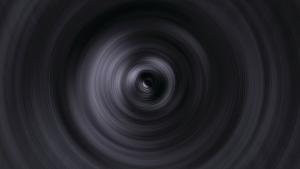
Clinker (2014)
6:33 min
Eric Gaucher
“Clinker” is a single channel experimental video that joins two notions. The first embraces one of the few definitions of the word clinker, which is to play a wrong musical note. Consequently, the audio composition is intentionally fractured and generated with mistakes. Secondly, the video loosely borrows visual inspiration from the Latin poet Lucretius’ poem “The Nature of Things”. More specifically, book two entitled “The Dance of Atoms”. As a result, the joined notions explore a relationship through a lyrical yet abstract synthesis.
Eric Gaucher is a multimedia/video artist who began making music videos in the late-nineties for independent bands in Montreal. While playing music himself in various noise/rock bands (most notably with The Donkeys), he went on to direct a number of documentaries featuring Canadian artists working in a variety of disciplines. His television work has been broadcast nationally in Canada on The Documentary Channel, Much Music, Music Plus and BRAVO. His experimental work has been screened in a variety of international festivals in Montreal, Toulouse, Phnom Penh, Kuala Lumpur and Bologna.
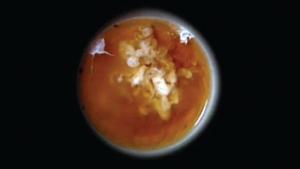
Ouverture phénoménale (1991)
1:30 min
Stéphane Claude
The observer receives, through an alchemical process, electronic alterations, calorific exchanges, mechanic transmissions, audio and magnetic waves. These manifestations are perceived within a circular window (the universal logos of creation), they form an axiomatic dialogue between cognition of the receiver and the essence of reality.
Stéphane Claude is an electronic/acoustic composer and sound engineer. His research is based on integrating a conceptual and physiological framework of audio recording and sound installation for different diffusion contexts in the electronic arts. His interests gravitate around the communication of a formal aesthetic, of a transductive experience of the electronic medium, an exploration of digital signal processing, the parameters of acoustic and sound in spaces. His work has been published by labels such as Der and Line (USA), Atak (Japan), Oral (Canada). As an audio consultant, he participates in the conception, production and integration of presentation spaces, of specialized analog and digital creation and production studios for artist-run centers, institutions and independent art spaces.
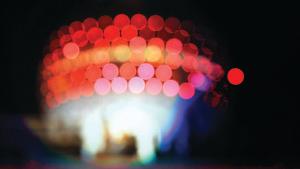
Postcard (2014)
3:04 min
Jules Saulnier
From the depth of the Shanghai night, a postcard is spoken out loud, a gasp of loneliness in one the world’s most populated city.
Jules Saulnier is a director and editor for movies, television and documentaries. As an editor, he has worked on over 30 short films, as well as the feature film “Class of ’09” by Rafaël Ouellet (2013). Several of his films have been screened in many festivals.

ASCII Alphabet (1999)
5:30 min
Dorion Berg
“ASCII Alphabet” is a humorous look at the “digitality” of the information object. It consists of a series of opposing image pairs, taken from antiquated children’s encyclopaedias, and accompanying sounds. These paired binaries are arranged according to one of the most commonly used binary text encoding schemes: the ASCII code (American Standard Code for Information Interchange). In ASCII code each character of the alphabet can be reduced to a 7 digit binary string. “ASCII Alphabet” is structured so as to slowly reveal the encoded alphabet, first by transcribing these strings using the 26 pairs of sounds (A-Z), then by adding the numerals 1 and 0, and finally by using both the opposing images and sound together. In an attempt to give insight, for our analog consciousness, into the nature of digital information, “ASCII Alphabet” becomes more of an exploration of the breakdown of difference through digital translation and formal manipulation.
Dorion Berg is a Canadian artist born in Ottawa in 1975. From 1996 to 2001 he completed a BFA in interdisciplinary studies at Concordia University in Montreal. “ASCII Alphabet”is his first major video production and was the winner of the “V is for Video” People’s Choice Award at the 13th Annual Images Festival in Toronto (2000) and the Prix Vidéoformes at the Festival International d’Art Vidéo et Multimédia in Clermont-Ferrand, France. Dorion’s other past work ranges from ceramics to sound sculpture. Since 2002, he has lived in Taipei, Taiwan, where he studied traditional Chinese ceramics and currently produces wood-fired pottery.
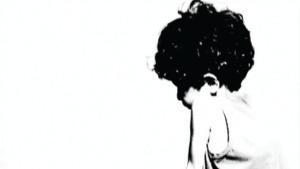
The Impossible Ark (2002)
8:40 min
Véronique Sapin
A pastel-coloured poem about a wandering ark, guided by Noah’s uncontrolled imagination. A new ark, a new Noah for a flood which perhaps has never receded.
Véronique Sapin seeks out moments of life in suspension—moments that come murmuring into existence ready to be received. She attends to these moments, yet fears the kinds of violent emotions that can interrupt and intercept our perception of and attention to these details. There is a kind of clash that exists in that moment when every contingency is still possible—it is at this point of unsteady balance that Véronique Sapin establishes her observatory. She captures these moments for us and in turn calls the world to respond to them. For Sapin, it is a call for us all to not only see the world’s vulnerbilities but to take responsiblity for them.
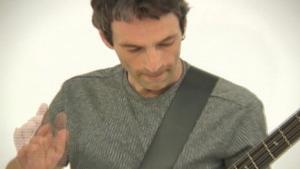
OK Gerard (2009)
4:25 min
Nathalie Bujold
Sounds were filmed in units and then assembled to create a score. Each section of the sound was scripted so that the visuals reflect what emerges from the musical form. On top of that, a few supplementary motifs are invited along to create a kind of video clip.
Nathalie Bujold was born in Chandler (Quebec) in 1964. She joined the artist-run centre l’Œil de Poisson in Quebec City when it was founded in 1985. Her work has been shown in several group exhibitions both in Quebec and abroad. Bujold has been working on her short films since 1989.

A Film Portrait on Reconstructing 12 Possibilities That Preceded the Disappearance of Zoe Dean Drum (2011)
11 min 25
Eduardo Menz
A one-of-a-kind cinematic mystery whose meticulously crafted scenes provide subtle hints about the disappearance of its central (and noticeably absent) character.
Eduardo Menz was born in 1977 in Edmonton, Alberta, Canada from Chilean parents and has called Montreal his home since 2003. In 2007, Eduardo completed his undergraduate program in film production at Concordia University. He is a member of Montreal’s Double Negative Collective. Eduardo’s film work has always attempted to transgress and interweave the boundaries of what defines fiction, documentary and experimental film genres.
A recipient of several federal and provincial media grants for his short scripts and film work, he has won awards at the Brooklyn Film Festival, Hot Docs (Toronto), Les Rendez-Vous du Cinéma Québécois (Montreal), NextFrame Film Festival (Philadelphia).
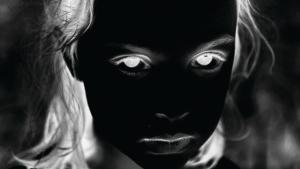
Soyouz-Choisy (2015)
6:08 min
Étienne de Massy
Soyouz drifting, a train ticket for Choisy and tutti quanti.
Étienne de Massy graduated from Concordia University in Montreal and went on to study at the Tisch School of the Arts in New York. Present in many festivals around the world, his work focuses on the construction of forms, patterns and volumes within time and space, and explores the relationship between visual and abstract narrative. His movies have been featured in various festivals, including the Mostra internationale di video e cinema Oltre (Milan, Italy), Vidéoformes (Clermont-Ferrand, France), Internationales Kurz Film Festival (Hamburg, Germany), Interfilm (Berlin, Germany), VIFF (Vancouver, Canada) and the Festival du Nouveau Cinéma (Montreal).
Curator:
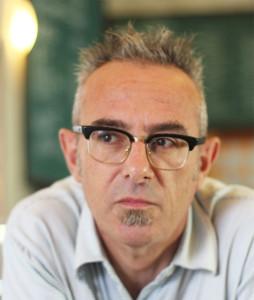
Fabrizio Gilardino is a bespectacled, infra-thin young man in his early fifties. Since the 1980s he has been working as graphic designer, illustrator, artistic director, record producer and curator, collaborating with a variety of festivals, art galleries and artist-run centres, record labels, radio stations and magazines both in Canada and Europe. Born in Italy, he currently divides his time between Montreal and South-East Asia. (Photo: pon souvannaseng)
Vidéographe is an artist-run centre dedicated to the creation, production and distribution of independent media art works. It was founded in 1971 thanks to the efforts of a group of filmmakers and producers from the National Film Board (NFB) who sought to democratize the production and circulation of audiovisual documents. Incorporated in 1973 as a not-for-profit organization, Vidéographe created a dissemination network for independent video that Canadians and Europeans have taken up as a model. Vidéographe’s mission is to promote the production and the spread of innovative media arts works: video art, documentary, short films, interactive installations and new media. The centre supports young artists in the making of their first works, as well as professionals in the practice and recognition of their art.
